Where in the Victorian era, tufting was restricted to beds, sofas and chairs; in modern homes this technique is spread across all rooms! Its timeless appeal complements aesthetics across all strata.
A casual look around will reveal tufted furniture everywhere be it in – classic Victorian-era paintings; elegant ballrooms in the movies; interior decoration magazines; houses of celebrities showcased on social media handles; or even in your neighbour’s living room.
Well, when it comes to interior design, it is the small elements that make a huge impact on the overall style of furniture and décor. Agreed that things like shape matter, but more often than not the beauty lies in the details. Perhaps that’s why techniques like tufting bring in a little something extra to the furniture they adorn enabling in making something as simple as a pouf stand out.
What is tufting & tufted furniture? Where are its roots? What are the various techniques or styles of tufting? What are its benefits? Which pieces of furniture/upholstery look their best when tufted? Gharpedia tries to answer these questions through this brief blog.
What is Tufting?

Tufting is basically attained when tiers of material are stitched tautly to form a pattern leading to the construction of uniform indentations throughout the pattern. Many a times these indents are fortified with a ribbon or a knot or even a button; but then again in contemporary design these indents are left bare. The elevated portions thus formed in the fabric are termed – tufts.
History of Tufting
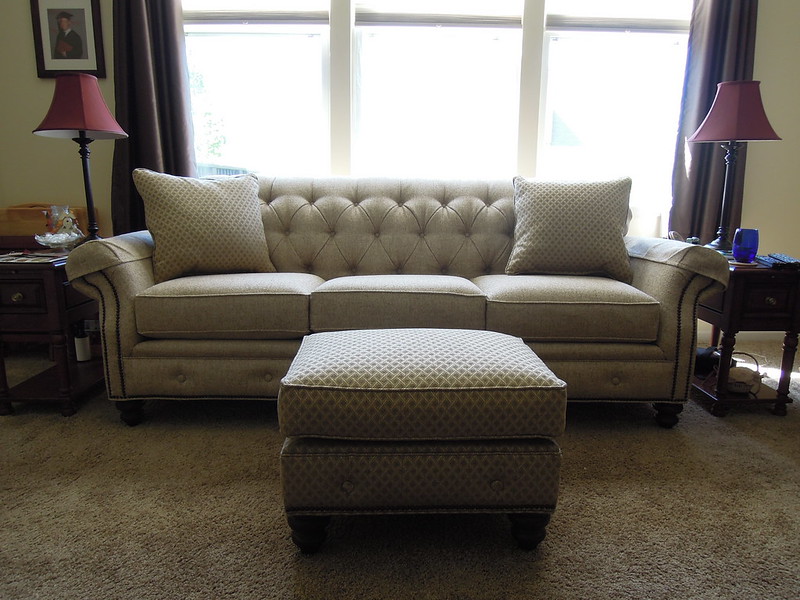
Tufting furniture came into prominence in the Victorian era. During those times the purpose of tufting was purely functional as its role was to simply keep intact the padding of chairs, mattresses and sofas. But then alike other décor trends tufting gradually evolved into a status symbol among the upper echelons of society.
In the modern era tufted fixtures are popular for many reasons – primarily the comfort they provide; and secondly the fact that they easily merge into any theme and background.
Where is Tufting Used?

Traditionally tufting was used in sofas, beds, couches and chairs; nowadays it is also used in headboards, dressers, mattresses, benches, poufs, ottomans and so on.
Benefits of Tufted Furniture
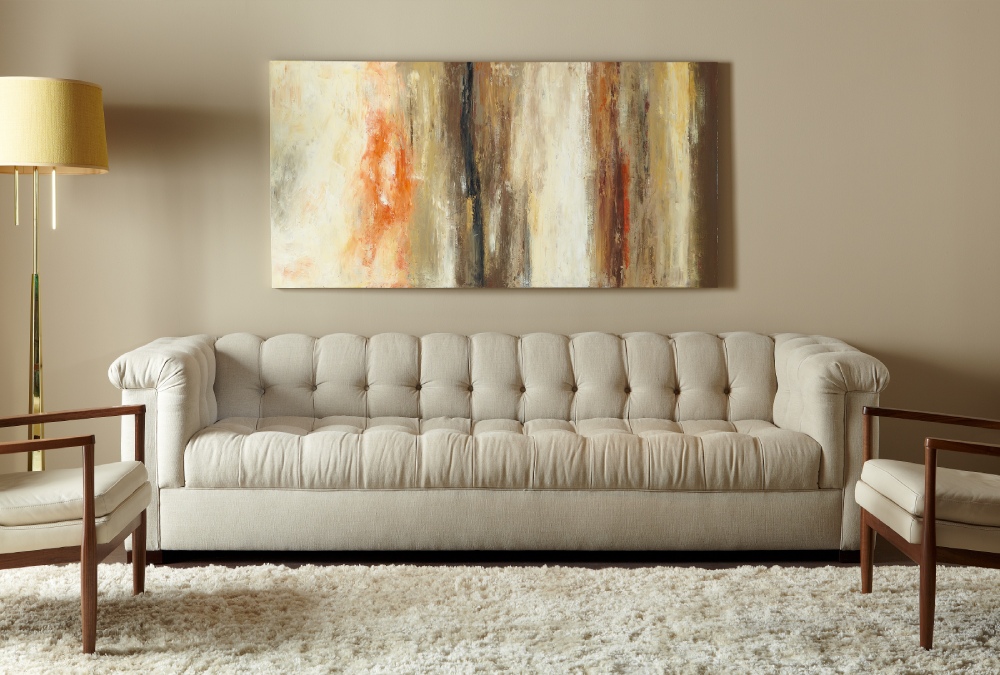
Some of the pluses of this technique are –
- It brings subtle elegance, style and professional finesse to the piece of furniture.
- It enhances comfort and cushioning.
- Tufted furniture adds texture and dimension to the room.
- As each technique of tufting involves reinforcing the fabric every few inches-resulting in less sagging – this automatically increases the longevity.
- Adds depth.
- Has timeless appeal.
- Helps pieces stand out.
Types of Tufting
From the broader perspective there are basically five main methods that artisans use to create the tufted look. While they appear quite similar in style, yet each has its exclusive features that go on to leave a unique impact on the aesthetic appeal of the piece of furniture they adorn and in turn the room the furniture is positioned at.
Here’s sharing some tufting styles to help you zero-in on the one which best suits your comfort zone and lifestyle –
Diamond Tufting:

Diamond tufting is one of the oldest, most popular and common technique of tufting; here the material is pulled and fastened to form a diamond shape. Elegance, timelessness and comfort are what this tufting has on offer. The classy look is frequently emphasised by deploying techniques like – seamed panels, pleated folds et al.
Used in sofas, chaises, and similar pieces of furniture; diamond tufting on velvet or satin gives an exclusively luxurious feel.
Biscuit Tufting:
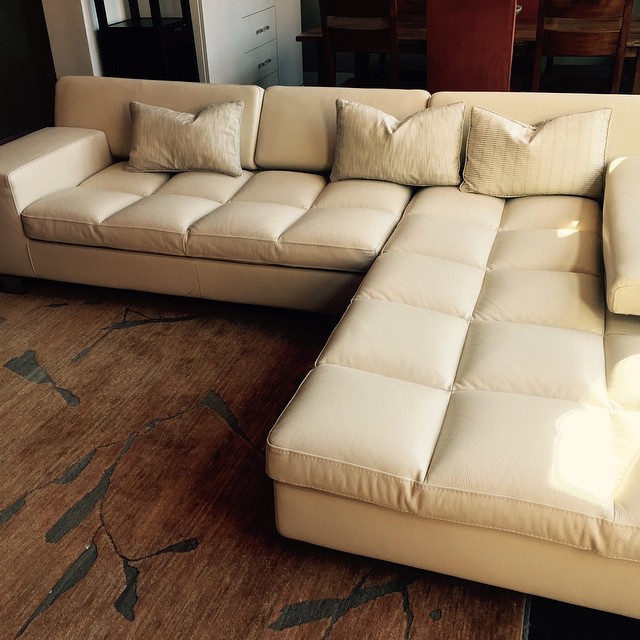
One of the recent additions to tufted furniture, biscuit tufting entails formation of squares with the indents ranging from shallow to deep … leaving one with a chic, aesthetic and clean impact.
This tufting has a quilt-like feel. When the tufts make a more rectangular pattern, it’s sometimes referred to as bun tufting.
Irrespective of the patterns being rectangular or square the size remains 8-10 inches. This tufting can be either flat and clean-lined or cavernous for added comfort.
Button Tufting:
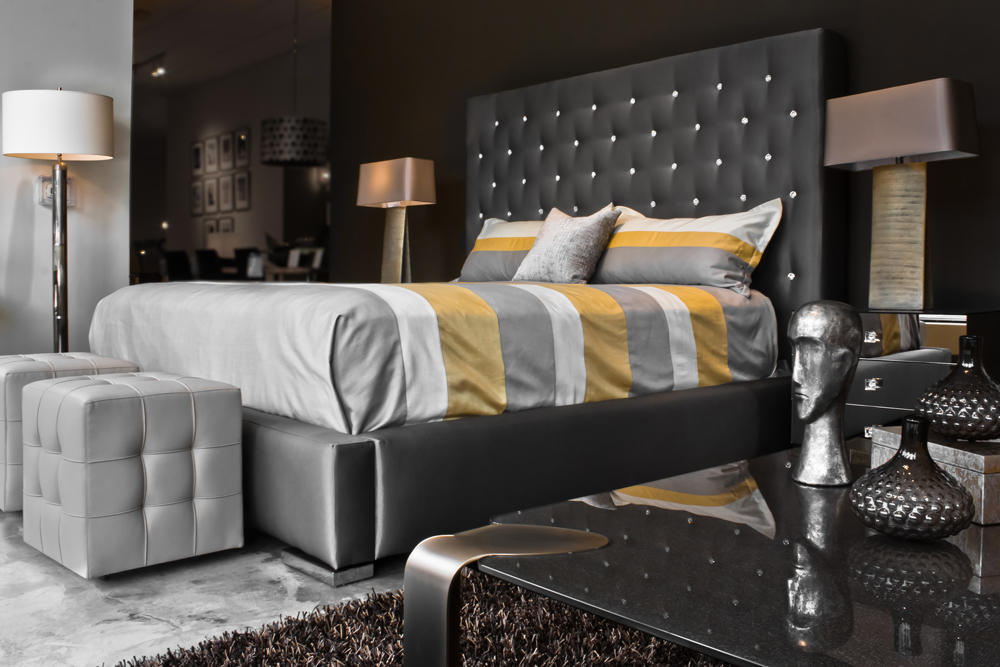
This type of tufting uses a button as the anchor and the artisan pulls the thread through the padding and the upholstery. The result is royal, exquisite and timeless, making it just perfect not only for sitting rooms or formal dining rooms; but also for traditional-styled bedrooms, family rooms, and just about any other space. The stitches in this tufting are tad superficial vis-à-vis the stitches in diamond tufting consequently the indents in the piece of furniture are also quite subtle. Though the buttons usually match the colour of the fabric, one can always use another material or colour to draw visual interest. Spacing, pattern, and the number of tufts all work in conjunction to create a variety of designs. The best part about button tufting is that it can be easily integrated into biscuit and diamond tufting.
Blind Tufting:
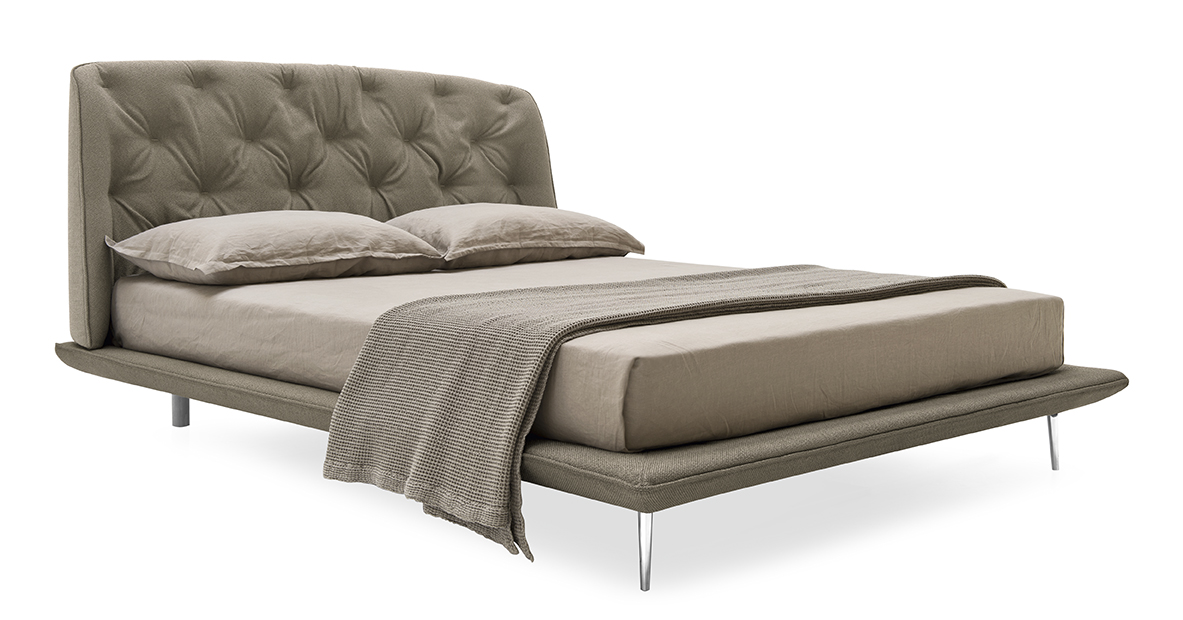
This style of tufting is a tad rare, unlike its other counterparts for the simple reason that it does not have any familiar style or pattern. It is simple and swift to execute – just pull back the material and fortify it with something as basic as a knot! The lack of frills (buttons, ribbons or other accents) makes this the perfect choice for those who prefer simplicity and also for households with pets and children.
Buying or designing furniture for children is not an easy task as you have to ensure so many things. Check this blog for what to look for while designing children’s furniture.
Channel Tufting:
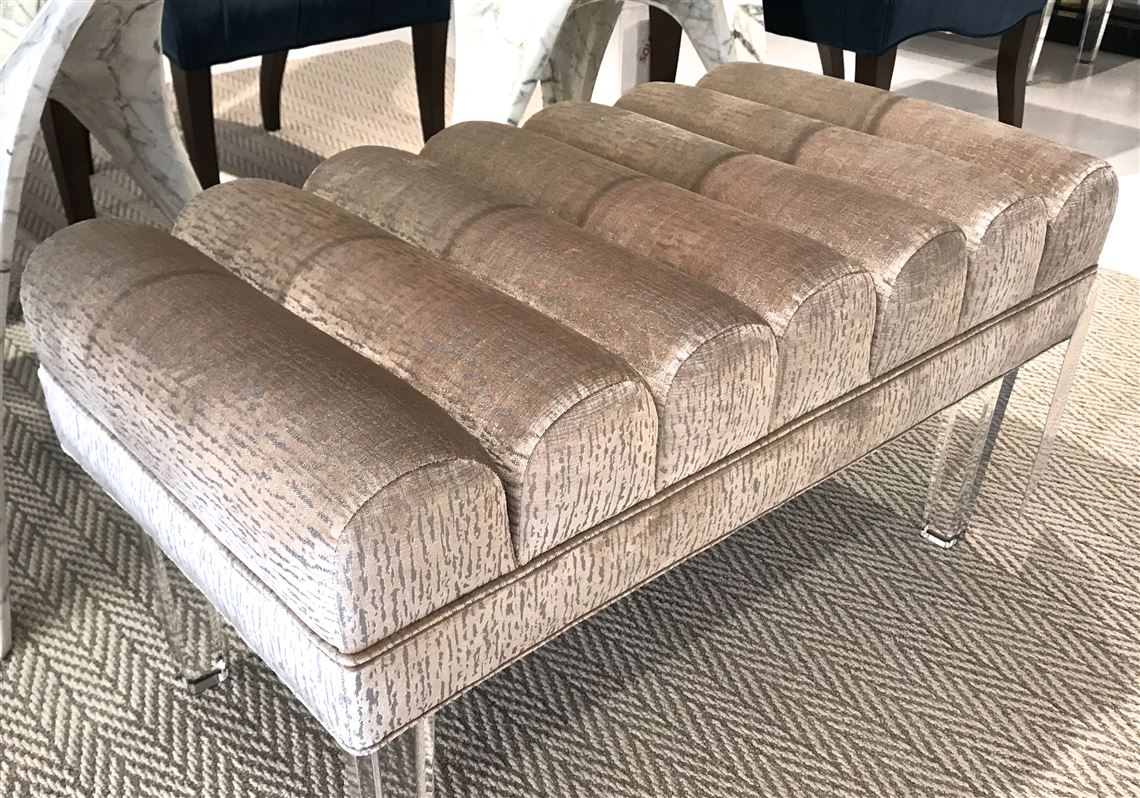
This tufting style features horizontal or vertical sewed lines and not the conventional indents; where the padding fills a long channel between two lines of stitching, for a more modern look. Generally the term ‘channel’ denotes that the lines in this style of tufting are vertical. When it comes to tufting being done in horizontal lines then it is termed as – “horizontal channel tufting”.
The sleek design has a mid-century vibe and makes a distinctive style statement. This technique is more used in headboards as – it gives a sense of height; and the even finish makes it more comfortable to rest the head on the headboard. So that’s all about the different types of tufting. Those with a streak of innovation and creativity can explore pairing two tufting styles together, too! Say for instance biscuit tufting can be combined with the linear patterns of channel tufting to create an exclusive look.
No matter whichever style you opt for, trust us tufting will definitely add interest and charm to furniture and decor. So go on choose your favourite and bring it into your space with the perfect armchair, swing upholstery or hey…even your bed headboard.
By now, your doubt of what is tufting must be cleared now. Do share your thoughts on tufted furniture in the comment box below.
Image Courtesy: Image 2, Image 10
Author Bio
Huta Raval – An English Literature and Journalism Topper, Huta Raval has graduated from the L D Arts College, Ahmedabad. Post serving for 23 years in the NBFC and Public Library Sectors her desire for ‘writing the unwritten’ brought her to the creative field of content writing. Her clientele comprises of NGOs, Blogging Platforms, Newspapers, Academic Institutions, et al.
